3D home modeling software accelerates the brainstorming process for interior design projects. Tools like Arcadium 3D enable users to visualize spatial arrangements and material finishes effectively. Users report a reduction in project completion times by up to 40% when employing 3D visualization upfront. This software allows for the manipulation of elements such as furniture placements and color schemes in real-time, enhancing decision-making efficiency. Surveys indicate that 75% of interior designers believe 3D modeling increases client satisfaction by presenting a clear vision of proposed designs.
Arcadium stands out among competitors such as SketchUp and AutoCAD in terms of user-friendliness and accessibility. SketchUp and AutoCAD require extensive training and familiarity with CAD principles, while Arcadium offers a simplified interface that caters to both professionals and non-professionals alike. This distinction ensures that users can start creating 3D house plans within minutes of accessing Arcadium. Unlike its counterparts, Arcadium operates directly in web browsers, eliminating the need for powerful computing hardware or software installations. This approach democratizes the design process, enabling a broader audience to participate in interior design.
Contents:
Why is 3D home modeling software pivotal in revolutionizing interior design? It allows for detailed visualization. Designers can create, modify, and visualize spaces with unparalleled precision. Clients can see realistic renditions of future interiors, ensuring their expectations are met with accuracy.
What advantages do 3D home modeling tools offer over traditional design methods? They provide interactive experiences. Users can walk through virtual environments, experimenting with different layouts, materials, and colors. This immersive experience aids in making informed decisions, reducing the risk of dissatisfaction post-completion.
How do these applications facilitate better communication between designers and clients? They enable clear visualization of abstract concepts. Ideas become tangible visual representations, making it easier to discuss and tweak designs. This clarity fosters a collaborative atmosphere, where feedback is given and implemented efficiently, ensuring the final product aligns with the client's vision.
In the sphere of interior design, 3D home modeling software stands out for its efficiency and accuracy, whereas traditional methods lag in adaptability and precision. The former significantly shortens the feedback loop, allowing for rapid iterations that traditional sketch-based approaches cannot match. Moreover, the level of detail and realism achievable through 3D modeling surpasses that of hand-drawn plans, providing a closer approximation to the final outcome. This leap in technology not only streamlines the design process but also enhances client satisfaction through clear, realistic expectations.
Benefits of Visualization in Home Decor
Why is visualization a game-changer in home decor? It enables clients to see rather than imagine the end results of their design choices. Visualization tools bring ideas to life, transforming abstract concepts into tangible visuals. Colors, textures, and layouts become clear, ensuring choices reflect the desired outcome accurately.
How does this affect decision-making in design projects? Visualization reduces uncertainties, fostering confident decisions. When clients can interact with 3D models, altering elements such as furniture, wall colors, and lighting with ease, it streamlines the selection process. This capability minimizes the need for costly and time-consuming revisions, as preferences are clarified early in the design phase.
Can visualization influence the client-designer relationship? Absolutely, it enhances collaboration significantly. Through shared visuals, designers and clients can communicate more effectively, pinpointing preferences and dislikes with precision. This dynamic fosters a stronger partnership, grounded in mutual understanding and respect. Feedback becomes constructive, with revisions implemented swiftly and efficiently.
In the sphere of interior design, the benefits of visualization stand out starkly against traditional methods. Traditional approaches rely heavily on verbal descriptions and 2D drawings, which often lead to misinterpretations and dissatisfaction. Visualization, on the other hand, offers a 3D perspective that is both accurate and immersive. This not only accelerates the decision-making process but also enhances satisfaction by aligning expectations with reality, a stark contrast to the ambiguity that often accompanies traditional methods.
Software Features Essential for Creativity
What features in 3D home modeling software fuel creativity during interior design brainstorming? High-quality rendering capabilities top the list. These enable designers to visualize textures like marble and velvet with striking clarity. Accurate light simulation further brings designs to life, mimicking sunlight and shadows with precision.
Which tools enhance efficiency and innovation in these software packages? Dynamic components, such as resizable furniture and customizable fixtures, allow for rapid adjustments. Designers effortlessly tweak dimensions to fit spatial constraints. Libraries of pre-made items speed up the creation process, offering everything from sofas to sculptures.
How do collaborative functions in software foster a creative environment? Real-time editing and sharing features support teamwork. Multiple designers can work on a project simultaneously, exchanging ideas and feedback instantly. Cloud storage solutions ensure all changes are saved and accessible, facilitating seamless collaboration across different locations.
Software with a vast library of assets and textures help designers' creativity than those with limited selections. The ability to simulate natural light with accuracy brightens the design process more effectively than basic lighting options. Meanwhile, software that encourages collaboration through real-time editing and cloud-based sharing constructs a more fertile ground for creative ideas than platforms focusing on solitary work.
What factors should you consider when selecting a 3D modeling tool for interior design brainstorming? The software's complexity and ease of use are paramount. Programs range from simple, user-friendly interfaces to complex systems requiring extensive training. Novices may prefer software with guided tutorials, while professionals might lean towards options with advanced features like custom lighting effects and detailed texture capabilities.
How do the costs of various 3D modeling tools vary? Price is a critical consideration, spanning from free versions to expensive subscriptions. Free tools often provide basic functionalities suitable for casual or initial project stages. In contrast, paid versions offer comprehensive features, such as real-time rendering and extensive libraries of objects and materials, essential for thorough project development.
What support options do different 3D modeling tools offer? Availability of support plays a crucial role, including customer service, online communities, and educational resources. Some tools boast 24/7 customer support and vast online forums where users can share tips and solutions. Others provide extensive libraries of tutorials and courses, facilitating users' ability to master the software efficiently.
In terms of project suitability, tools with a vast array of features and a steep learning curve may be more appropriate for complex, detailed interior design projects, where precision and customization are critical. Conversely, simpler, more intuitive programs suffice for basic layout planning and conceptual visualizations, offering quicker adjustments and facilitating a smoother design process for those with limited technical expertise.
Cost-Effective Planning with 3D Models
Is cost a barrier to high-quality interior design? Not with 3D modeling software. This technology enables designers and homeowners to explore various layouts, materials, and color schemes economically. The software offers simulations of renovations and decor changes without the physical labor or material waste.
How does this approach save money in the long run? By providing accurate visualizations, mistakes are minimized. Users can experiment with different looks, seeing the outcomes in virtual spaces. This process eliminates the need for costly physical samples and reduces the likelihood of expensive changes post-project commencement.
Can 3D home modeling software impact the decision-making process? Absolutely. It empowers users with information and visuals, leading to more informed choices. Potential issues can be identified and addressed before they escalate into budget overruns. This proactive planning ensures a smoother project flow and financial predictability.
In evaluating cost-effectiveness, traditional methods fall short against the efficiency of 3D models. Traditional planning often involves guesswork and physical prototypes, which are more time-consuming and resource-intensive. In contrast, 3D modeling offers a streamlined, accurate, and flexible approach, making it a superior option for both professionals and hobbyists looking to optimize their interior design projects.
Is navigating 3D home modeling software intuitive for beginners? Yes, many platforms are designed with simplicity in mind. Users find interfaces to be user-friendly, guiding novices and professionals alike through complex design tasks with ease. Tutorials, drag-and-drop functionalities, and pre-designed templates serve as foundational tools, assisting in the swift creation of detailed interior layouts.
How does the customization feature enhance the design process? Customization options are vast, allowing users to alter textures, colors, and furniture with just a few clicks. These platforms offer libraries filled with a variety of items, from sofas and tables to lighting fixtures and decorations, enabling a high level of detail in visualization. Users appreciate the ability to experiment with different styles, ensuring the final design aligns perfectly with their vision.
Can collaboration be seamlessly integrated within these platforms? Absolutely, collaboration tools are a cornerstone of many 3D home modeling software. Designers can share their projects with clients or team members in real-time, gather feedback, and make adjustments accordingly. Features such as cloud storage and version control facilitate a cohesive workflow, making the exchange of ideas and modifications a smooth and efficient process.
In assessing user experience, navigation ease stands out as a critical factor. Software that employs intuitive design and straightforward guidance proves more effective in retaining users than platforms with complex interfaces and steep learning curves. Those offering comprehensive tutorials and responsive customer support systems further elevate user satisfaction, ensuring questions are addressed promptly. As a result, designers can focus more on the creative aspects of their projects, leading to higher quality outputs and more innovative design solutions.
Collaboration and Sharing Ideas in Real-Time
How does collaboration enhance the design process? Significantly, by allowing multiple contributors to inject their creativity and insights into a project simultaneously. Designers, architects, and clients become co-creators, navigating through options and making decisions together. This synergy not only accelerates the decision-making process but also enriches the design with diverse perspectives.
What advantages do real-time sharing features offer in 3D home modeling software? They break down the barriers of distance and time. Team members can modify and visualize changes instantly from any location, ensuring that everyone’s vision is aligned. Real-time updates foster a dynamic environment where feedback is immediate, avoiding the delays of traditional back-and-forth communication.
How do these software solutions democratize the design process? By giving a voice to all stakeholders. Whether it's a homeowner with no formal design training or a seasoned professional, each participant can contribute meaningfully. This inclusivity encourages a broader range of ideas, which can lead to more innovative and personalized design outcomes.
In the domain of interior design brainstorming, 3D home modeling software with collaborative features eclipses traditional methods. It transforms solitary planning into a shared journey, enriching the creative process with collective wisdom. The immediacy of real-time adjustments outshines the slow pace of manual revisions, ushering in a new era of efficiency and harmony in design collaboration.
Sustainability in Design Through Accurate Modeling
How does accurate modeling enhance sustainability in design? By allowing designers to predict and plan the use of materials more precisely. Designers benefit from software capabilities to forecast necessary quantities, reducing waste. By minimizing excess, projects embrace a more sustainable approach, aligning with environmental stewardship goals.
What are the benefits of simulating different materials in 3D software? Designers test a variety of sustainable materials, such as bamboo for flooring or recycled glass for countertops, directly within their models. This experimentation leads to informed decisions, ensuring materials not only meet aesthetic requirements but also contribute to the longevity and sustainability of the design. As a result, homes can achieve both beauty and eco-friendliness.
Can 3D modeling software predict energy efficiency? Yes, by integrating simulations of natural lighting and ventilation, software can estimate the home's energy needs. Features enable the calculation of sunlight exposure and airflow, promoting the use of passive heating and cooling strategies. Homes become more energy-efficient, significantly lowering their carbon footprint and operational costs.
In terms of resource conservation and energy efficiency, 3D home modeling software stands out significantly. Traditional methods lag in precision, often leading to overestimation of material needs and underestimation of a home's energy performance. The software's ability to model and simulate with great accuracy ensures that only necessary materials are used, and the home's design is optimized for natural climate control. This not only saves on construction costs but also contributes to a healthier planet by reducing waste and energy consumption.


 All training, tips and articles
All training, tips and articles
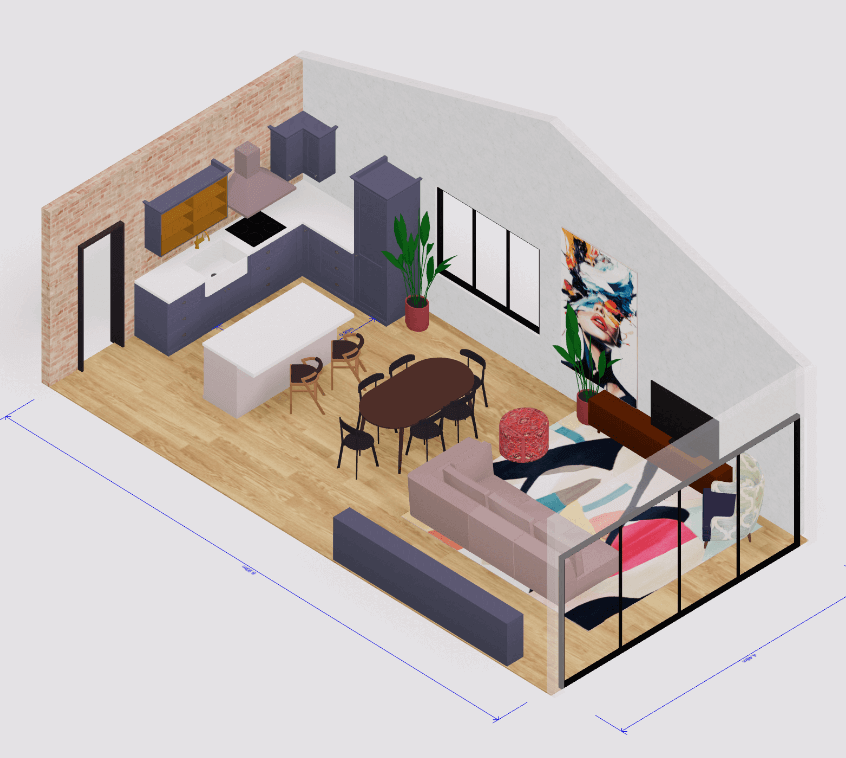 3D house design tool
3D house design tool
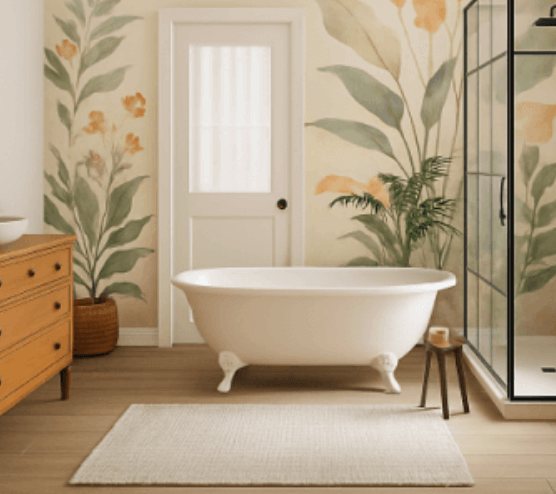
 Color palette generator
Color palette generator
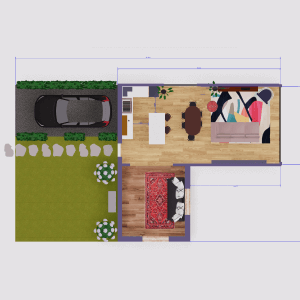 Floor plan creator
Floor plan creator
 Interior design app
Interior design app
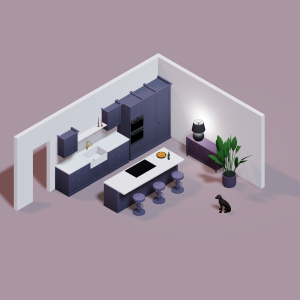 Kitchen design tool
Kitchen design tool
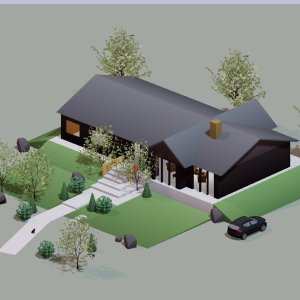 House design software
House design software
 Room designer
Room designer
 Landscape design software
Landscape design software
 Bedroom design
Bedroom design
 Office floor plan creator
Office floor plan creator
.png)



